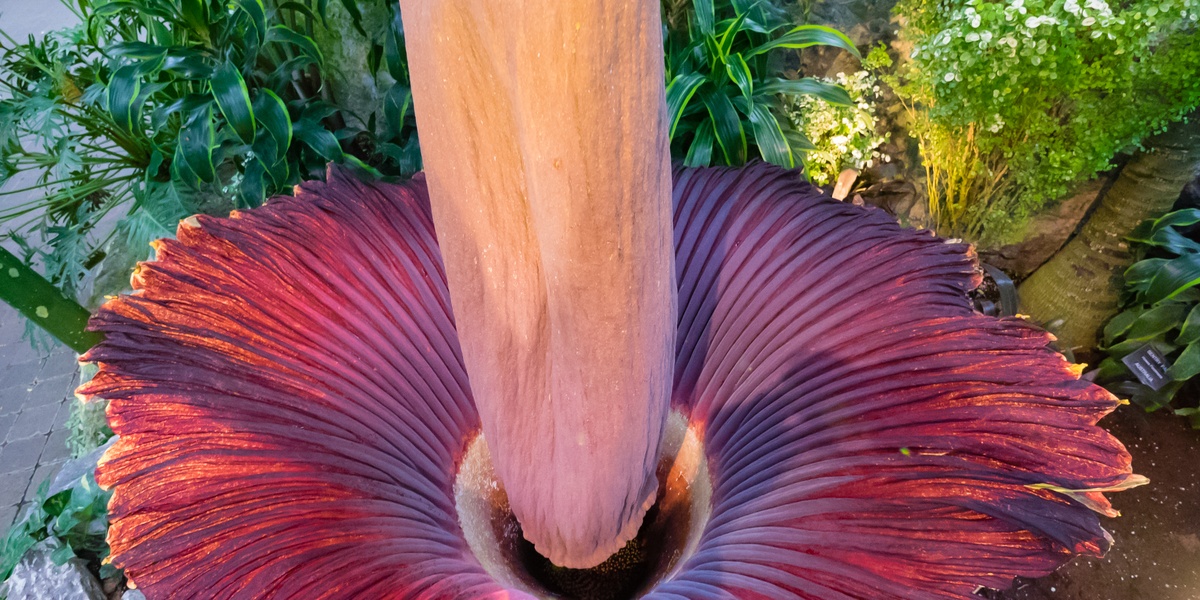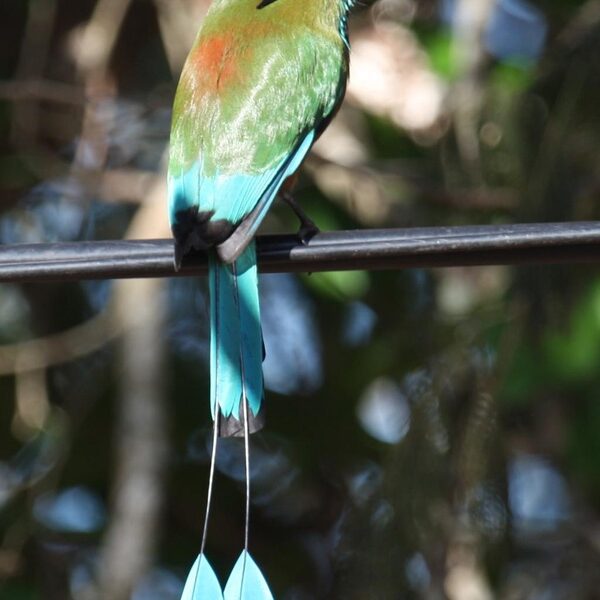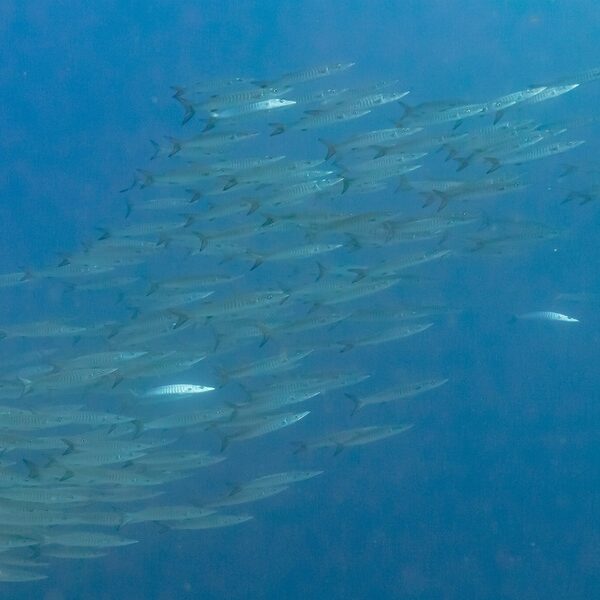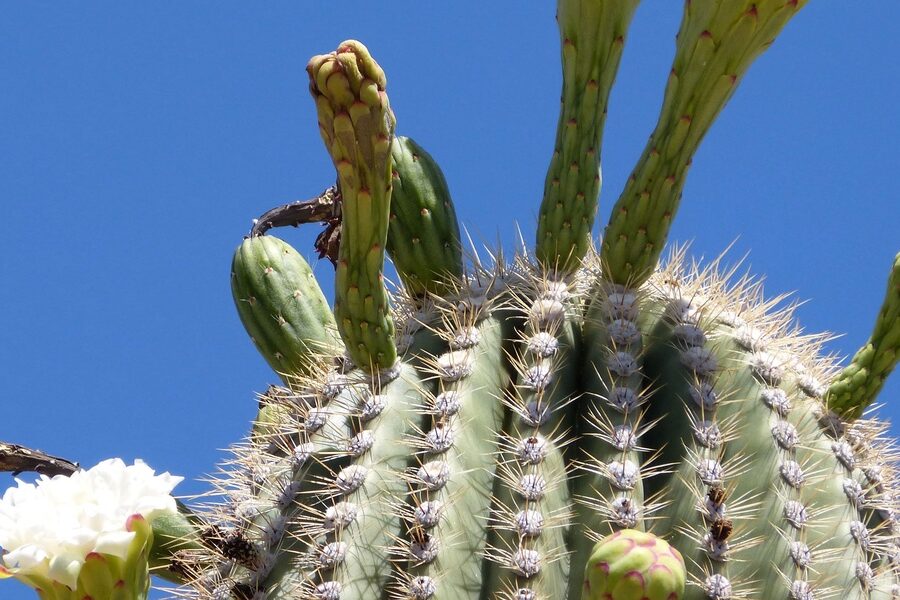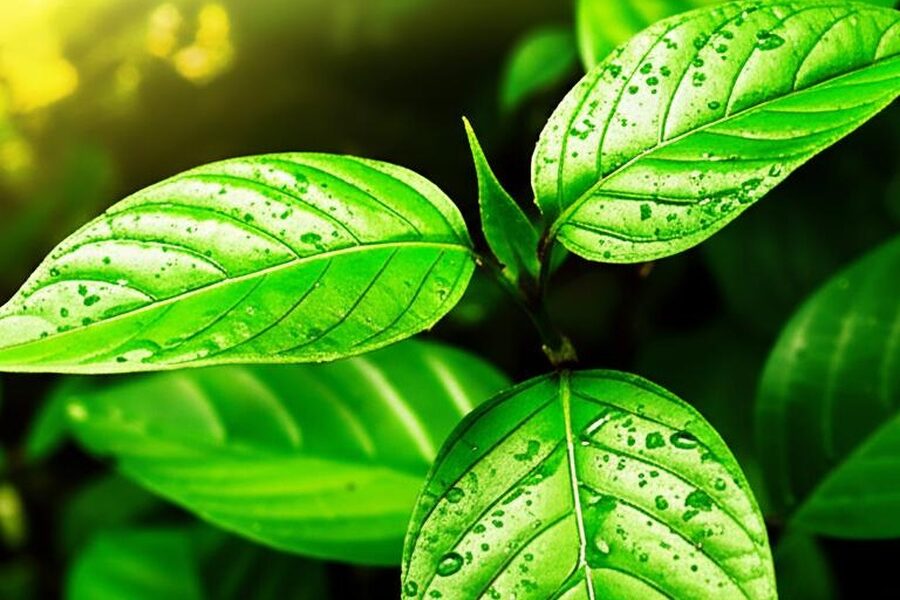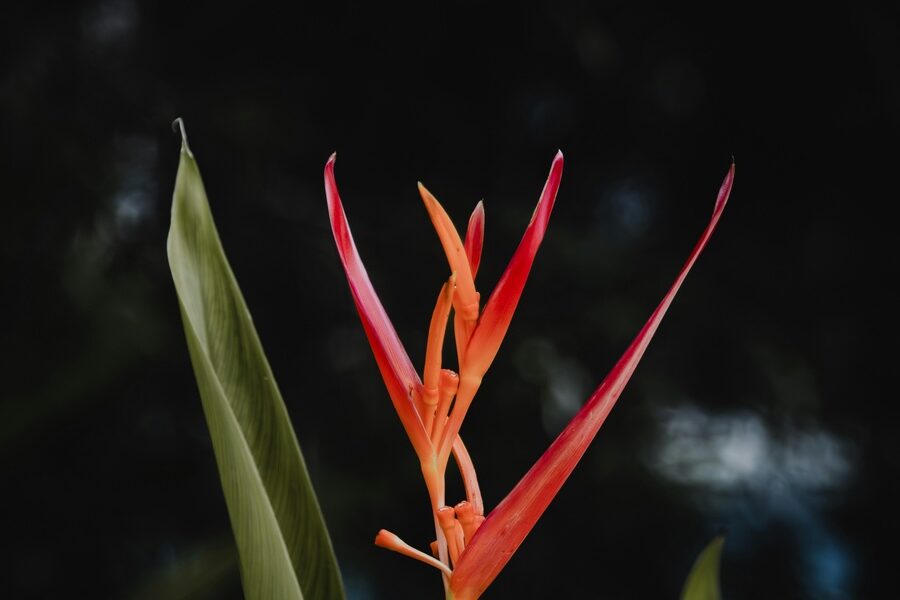From windswept deserts to shaded temperate gullies, plants evolve strange forms to survive. Some are sculptural giants, others are tiny survivors clinging to cliffs; together they reveal stories about climate, isolation, and deep time. This list brings those stories into one place for gardeners, students, and curious readers.
There are 50 unique plants, ranging from the African baobab to the Wollemi pine. For each entry, you’ll find below the Scientific name, Native range, Unique trait so you can compare origins and oddities at a glance.
How were these 50 species selected?
I chose species for clear, documented distinctiveness — unusual morphology, rare distribution, evolutionary significance, or notable cultural history. Sources prioritized taxonomic and conservation records so the selection spans habitats and examples (from the African baobab to the Wollemi pine) that illustrate different kinds of uniqueness.
Can I use the table to find plants suited to my area?
Yes — filter by the Native range column to see species that occur in or near your climate, then check Unique trait for growth form and tolerance. For cultivation, always confirm local legality and conservation status before sourcing or planting.
Unique Plants
| Name | Scientific name | Native range | Unique trait |
|---|---|---|---|
| Titan arum | Amorphophallus titanum | Sumatra | Largest unbranched inflorescence; foul odor |
| Rafflesia | Rafflesia arnoldii | Sumatra,Borneo | World’s largest single flower; holoparasitic |
| Welwitschia | Welwitschia mirabilis | Namib Desert (Namibia,Angola) | Only two continuously growing leaves; ancient gymnosperm |
| Giant sequoia | Sequoiadendron giganteum | Sierra Nevada,USA | Largest tree by trunk volume |
| Coast redwood | Sequoia sempervirens | California,USA | Tallest living trees on Earth |
| Wollemi pine | Wollemia nobilis | New South Wales,Australia | Living fossil rediscovered in 1994 |
| Ginkgo | Ginkgo biloba | China | Only surviving species of its ancient plant division |
| Dawn redwood | Metasequoia glyptostroboides | China | Thought extinct; rediscovered living species |
| Encephalartos woodii | Encephalartos woodii | South Africa | Extinct in the wild; only male clones exist |
| Franklin tree | Franklinia alatamaha | Southeastern USA | Extinct in the wild since early 1800s |
| Venus flytrap | Dionaea muscipula | Carolinas,USA | Rapid snap-trap carnivory; gape-and-close trap |
| Rajah pitcher plant | Nepenthes rajah | Borneo (Mount Kinabalu) | Mega-pitcher traps that can hold small mammals |
| Darwin’s orchid | Angraecum sesquipedale | Madagascar | Very long nectar spur; coevolved moth pollinator |
| Dragon blood tree | Dracaena cinnabari | Socotra, Yemen | Umbrella canopy and red resin “dragon’s blood” |
| Madagascar baobab | Adansonia grandidieri | Madagascar | Massive water-storing trunk; iconic silhouette |
| Queen of the Andes | Puya raimondii | Andes (Peru,Bolivia) | Tallest bromeliad inflorescence; monocarpic |
| Māhāhā silversword | Argyroxiphium sandwicense | Maui,Hawaii | Silvery rosette; high‑elevation monocarpic endemic |
| Ghost orchid | Dendrophylax lindenii | Florida,Cuba | Leafless epiphyte with elusive flowers and pollination mystery |
| Resurrection plant | Selaginella lepidophylla | Chihuahuan Desert,Americas | Can desiccate and revive when rehydrated |
| Living stones | Lithops karasmontana | Southern Africa | Mimics stones with two-leaf succulent pairs |
| Indian pipe | Monotropa uniflora | North America,Asia | Non-photosynthetic mycoheterotroph; translucent white plant |
| Attenborough’s pitcher plant | Nepenthes attenboroughii | Palawan,Philippines | Huge montane pitcher; named for David Attenborough |
| Saguaro | Carnegiea gigantea | Sonoran Desert,USA/Mexico | Tree-like columnar cactus with long lifespan and arms |
| Joshua tree | Yucca brevifolia | Mojave Desert,USA | Distinctive branching silhouette; desert keystone species |
| Giant water lily | Victoria amazonica | Amazon Basin,South America | Floating leaves over meters across; large night flowers |
| Hydnora | Hydnora africana | Southern Africa | Subterranean parasitic flower emerging with dung odor |
| Watermeal (smallest flowering plant) | Wolffia globosa | Worldwide freshwater | World’s smallest flowering plant; tiny free-floating duckweed |
| Catapulting sundew | Drosera glanduligera | Australia | Snap-tentacle sundew that catapults prey onto sticky leaves |
| Monkey orchid | Dracula simia | Andean cloud forests (Ecuador,Peru) | Flowers resemble a monkey face; fragrant like ripe fruit |
| King protea | Protea cynaroides | South Africa | Largest protea flowerhead; bold bracts |
| African baobab | Adansonia digitata | Sub-Saharan Africa | Massive trunk, extreme longevity and water storage |
| Cobra lily | Darlingtonia californica | Northern California,Oregon,USA | Unusual hooded pitcher resembling a cobra head |
| Ant plant | Hydnophytum formicarum | Southeast Asia | Hollow stem provides chambers for ant symbionts |
| Baseball plant | Euphorbia obesa | South Africa | Spherical, almost spineless succulent resembling a ball |
| Parrot pitcher plant | Sarracenia psittacina | Southeastern USA | Horizontal pitchers trap crawling insects in hood-like tubes |
| Spiral aloe | Aloe polyphylla | Lesotho | Perfectly spiral leaf arrangement; high-altitude endemic |
| Sensitive plant | Mimosa pudica | Tropical Americas | Rapid leaf-folding when touched; thigmonastic movement |
| Quaking aspen (Pando clone) | Populus tremuloides | North America | Massive clonal organism; single genetic individual covers hectares |
| Sacred lotus | Nelumbo nucifera | Asia | Seeds viable for centuries; remarkable seed longevity |
| Cardón cactus | Pachycereus pringlei | Baja California,Sonoran region | Largest cactus species by mass; tree-like form |
| Quiver tree | Aloidendron dichotomum | Namibia,South Africa | Succulent tree with forked form used historically for quivers |
| Hart’s cycad | Encephalartos altensteinii | South Africa | Ancient cycad with large ornamental cones; threatened in wild |
| Handkerchief tree | Davidia involucrata | China | Showy dangling white bracts resembling handkerchiefs |
| Amborella | Amborella trichopoda | New Caledonia | Basal angiosperm; represents earliest flowering plant lineage |
| Queen of the night cactus | Selenicereus grandiflorus | Mexico,Caribbean | Large, fragrant flowers that open only at night once or rarely |
| Albany pitcher plant | Cephalotus follicularis | Southwest Australia | Unique pitfall traps distinct from other pitcher families |
| Kokia | Kokia cookei | Hawaii,USA | Extremely rare, nearly extinct species preserved only in cultivation |
| Snow plant | Sarcodes sanguinea | Montane forests,Western USA | Bright red, non-photosynthetic mycoheterotroph emerging from forest floor |
| Fanged pitcher plant | Nepenthes bicalcarata | Borneo | Pitchers with distinctive “fangs” and ant mutualism |
| Giant rhubarb | Gunnera manicata | South America | Enormous basal leaves among herbaceous plants; dramatic pond edge presence |
Images and Descriptions
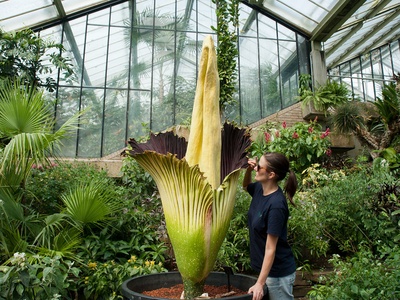
Titan arum
The Titan arum produces the world’s largest single unbranched flowering structure and a strong carrion smell to attract pollinators. It grows in Sumatran rainforests; blooms are rare and spectacular, best seen in botanical collections where careful temperature and humidity are needed.
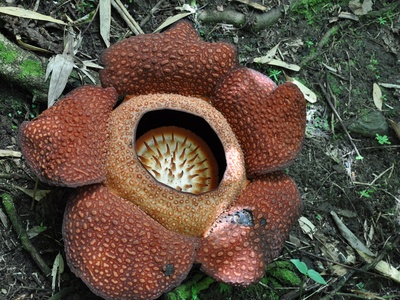
Rafflesia
Rafflesia is a stemless parasite that produces enormous, reddish flowers smelling of rot to lure flies. Found in Southeast Asian rainforests, it lacks leaves and stems; spotting one is special and conservation depends on habitat protection and respectful viewing.

Welwitschia
Welwitschia survives in the Namib Desert with just two leaves that grow for decades, twisting over rocks. This quirky gymnosperm is ancient and drought-adapted; see it on guided desert trips and avoid collecting wild specimens.
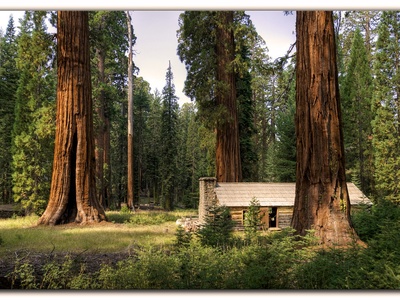
Giant sequoia
Giant sequoias form massive trunks and live millennia in California’s Sierra Nevada. They’re notable for sheer volume rather than height; best seen in protected groves, where many are conserved but sensitive to fire and climate changes.
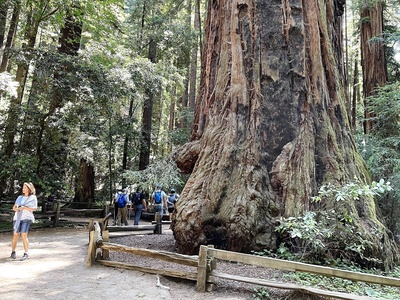
Coast redwood
Coast redwoods reach taller heights than any other tree species and form misty coastal forests. They prefer cool, foggy climates; visit national parks to view them and support conservation of old-growth stands.
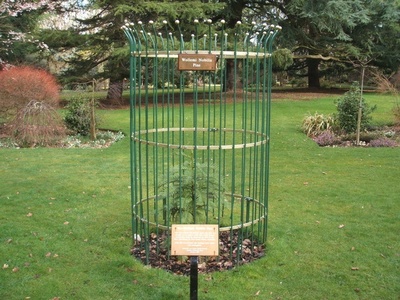
Wollemi pine
Wollemia is a prehistoric conifer found in a tiny Australian canyon and known from fossils. It’s cultivated worldwide for conservation; gardeners should source nursery-grown trees, as wild populations are critically protected.
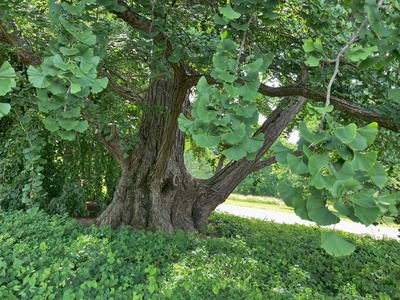
Ginkgo
Ginkgo is a living fossil with fan-shaped leaves and unique reproductive biology. Native to China and widely planted, it’s tolerant of urban conditions; many ancient specimens are culturally valued and conserved.
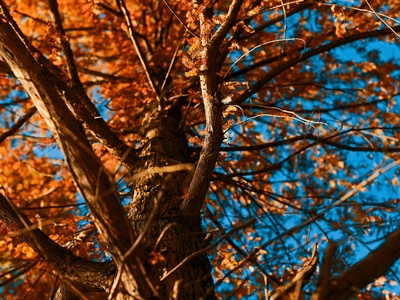
Dawn redwood
Once known only from fossils, dawn redwood was rediscovered in China and now grows in parks worldwide. A fast-growing deciduous conifer, it’s easy to grow in temperate gardens and celebrated for its conservation story.
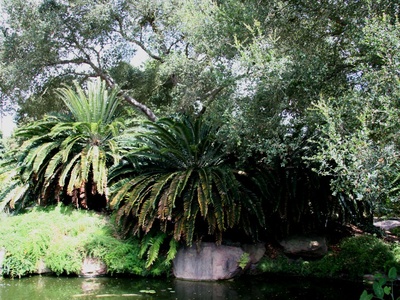
Encephalartos woodii
This cycad species survives only as cultivated male clones derived from a single collection. Extremely rare and prized in collections, it highlights conservation challenges; propagation is possible but wild recovery is none.
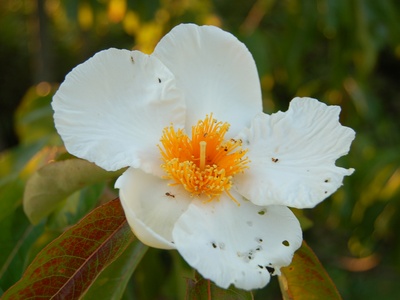
Franklin tree
Franklinia was last seen in the wild in the 1800s and survives in gardens from historical collections. It’s admired for fragrant white flowers; grow it in acidic soil and protect its historic provenance.
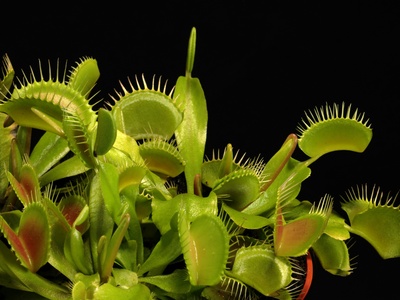
Venus flytrap
The Venus flytrap captures insects with lightning-fast leaf traps and is restricted to a small native range. It’s popular in cultivation but vulnerable in the wild; buy nursery-grown plants and avoid wild collection.
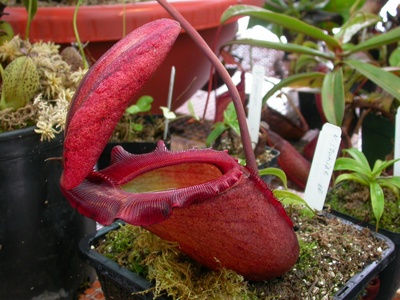
Rajah pitcher plant
N. rajah produces enormous pitchers that occasionally trap vertebrates, found on Borneo’s highlands. It’s a specialist of mossy slopes, rare in the wild, and best appreciated in conservation-minded collections.
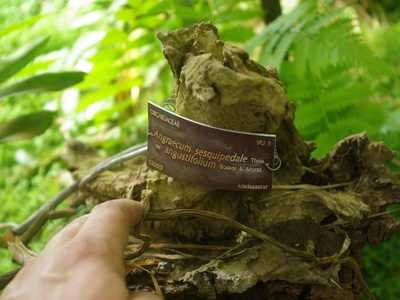
Darwin’s orchid
This orchid has a famously long nectar spur and led Darwin to predict a matching moth pollinator. Native to Madagascar, it’s prized by collectors; cultivation requires warm, humid conditions and specialist care.
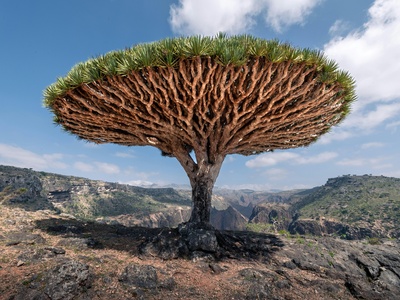
Dragon blood tree
Endemic to Socotra, this tree forms striking umbrella crowns and produces red sap historically valued as dye and medicine. It’s threatened by grazing and development; see it on Socotra tours and support habitat protection.
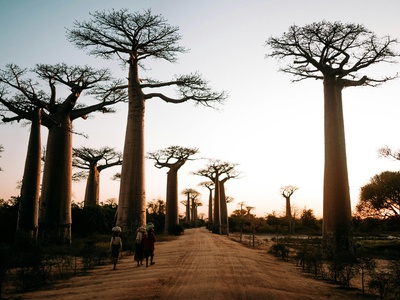
Madagascar baobab
This baobab has an enormous trunk that stores water and a dramatic profile on Madagascar’s dry plains. Many are endangered by habitat loss; viewing is best on guided trips and local conservation supports survival.
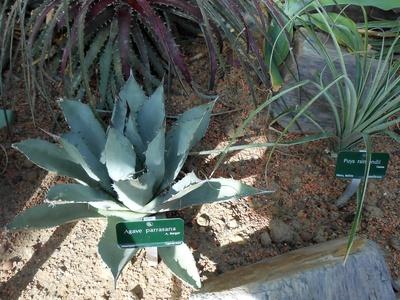
Queen of the Andes
Puya raimondii sends up a towering flower spike only once before dying, sometimes over 10 meters tall. It’s endemic to high Andes páramo; sightings are rare and populations need grazing controls to persist.

Māhāhā silversword
Hawaii’s silversword forms a dense silver rosette and blooms once before dying, found on windy alpine slopes. It’s vulnerable to trampling and introduced animals; ecological tourism and fencing protect populations.
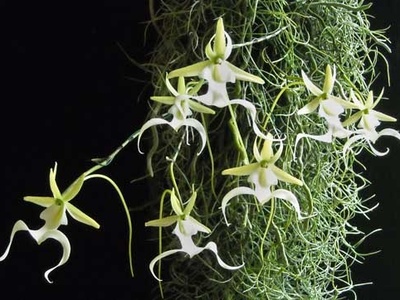
Ghost orchid
The ghost orchid lives high on tree trunks, lacking leaves and producing delicate, transient flowers. It’s rare and challenging to cultivate; sightings require patience and respect for wild populations.
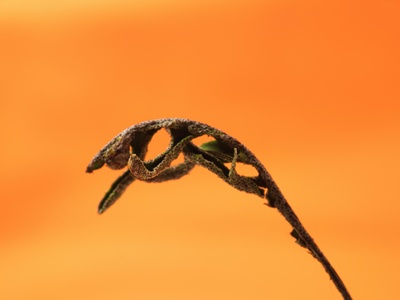
Resurrection plant
This “resurrection” clubmoss curls into a dry ball in drought and revives after rain. Native to deserts, it’s used as a curios plant; treat gently when hydrated and avoid wild-harvest pressures.
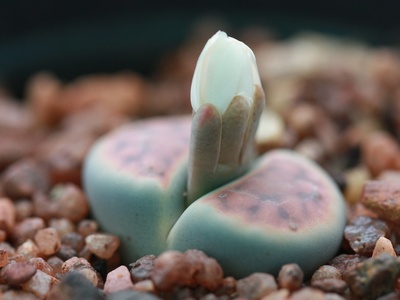
Living stones
Lithops resemble pebbles, using camouflage to avoid herbivores in arid habitats. They split and flower from the fissure between leaves; grow from seed with bright light and careful watering.
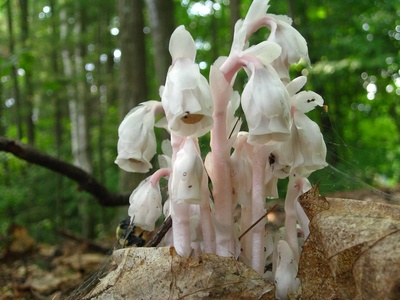
Indian pipe
Indian pipe lacks chlorophyll and obtains nutrients via fungi linked to trees. It appears in shady, moist forests as ghostly white stalks; observe without disturbing fungal networks and conserve forest habitat.
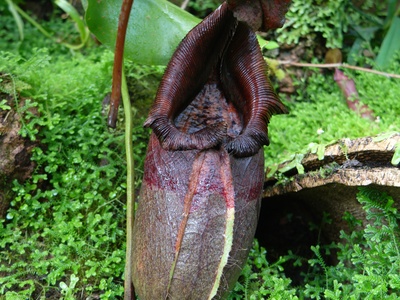
Attenborough’s pitcher plant
This Bornean-Philippine highland pitcher is notable for large, robust traps accessible to collectors. Restricted to a single mountain, it’s vulnerable and should only be seen in situ or through reputable conservation programs.
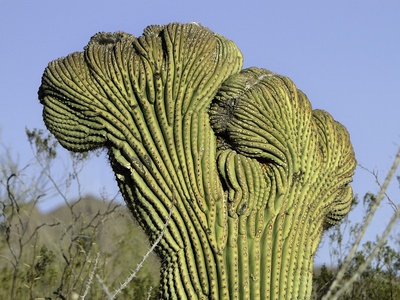
Saguaro
Saguaros form iconic arms and can live for centuries in the Sonoran Desert. They provide wildlife habitat and are protected; never collect from the wild and appreciate them in protected desert areas.
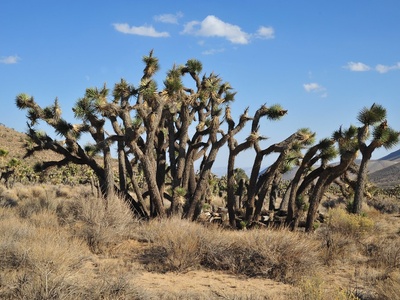
Joshua tree
Joshua trees create striking, angular forms across the Mojave and are keystone species for many animals. They face climate threats; support protection and avoid transplanting wild specimens.
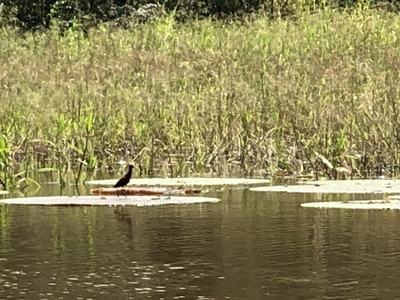
Giant water lily
Victoria has enormous circular pads that support heavy weight and dramatic, night-blooming white flowers that turn pink. Native to Amazonian floodplains, view in botanical gardens or in the wild with low-impact tours.
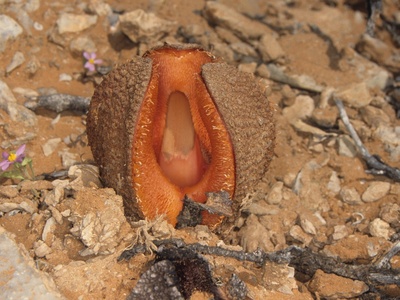
Hydnora
Hydnora lives mainly underground and only the fleshy flower emerges, emitting a dung-like smell to attract pollinators. It parasitizes Euphorbia roots; see it locally with guides and avoid disturbing populations.

Watermeal (smallest flowering plant)
Wolffia is microscopic and reproduces rapidly on nutrient-rich waters. It’s notable for its minute size and potential as food research; observe under magnification and protect freshwater habitats.
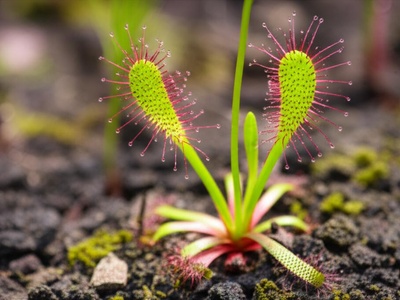
Catapulting sundew
This sundew uses rapid catapulting tentacles to capture insects and fold them for digestion. Native to seasonal wetlands, it’s fascinating in carnivorous plant displays; protect its ephemeral habitat and source plants responsibly.
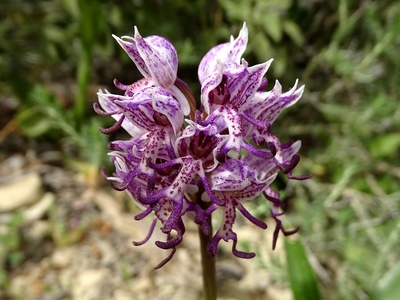
Monkey orchid
Dracula simia produces uncanny, monkey-like flower faces and sweet scent in cloud forests. It grows as an epiphyte and is alluring to orchid enthusiasts; cultivation needs cool, humid conditions and ethical sourcing.
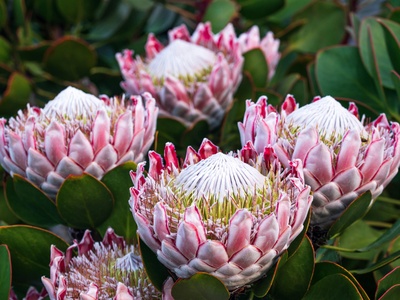
King protea
The king protea has dramatic, large flowerheads and sculptural bracts native to South African fynbos. It’s adapted to fire-prone habitats; grow in well-drained, acidic soils and support fynbos conservation.
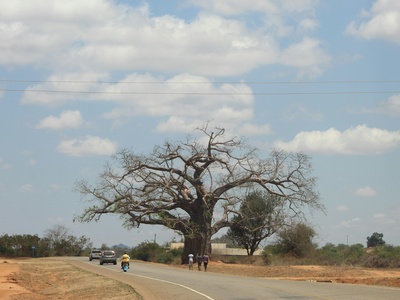
African baobab
African baobabs store water in swollen trunks and can live millennia, shaping savanna landscapes. Many are culturally significant; view them respectfully in the wild and support local conservation efforts.
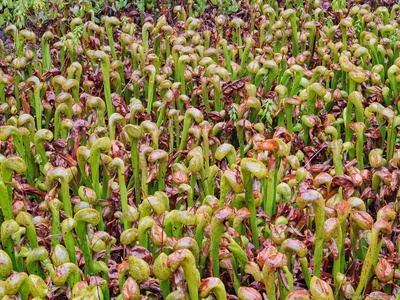
Cobra lily
Darlingtonia forms translucent false windows and a hood to trap insects in foggy bogs. It prefers cool, oxygen-rich bogs; cultivation requires flowing, cool water and careful humidity management.
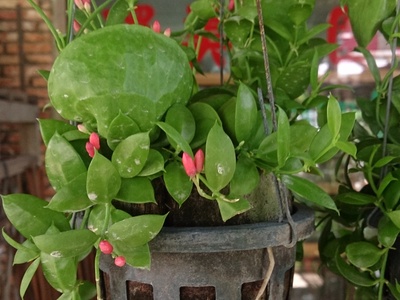
Ant plant
Hydnophytum develops specialized hollow tubers that shelter ants, gaining protection and nutrients from their waste. These myrmecophytes are epiphytic; grow in bright, humid conditions and study their mutualism rather than disrupt it.
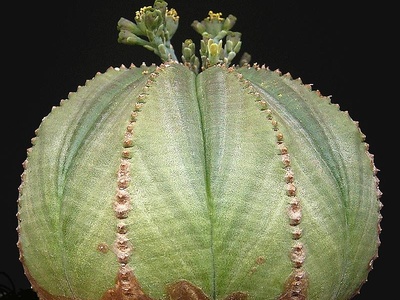
Baseball plant
Euphorbia obesa looks like a green baseball and stores water in a globose stem. Native to arid areas, it’s popular in collections; needs sharp drainage and protection from overwatering.
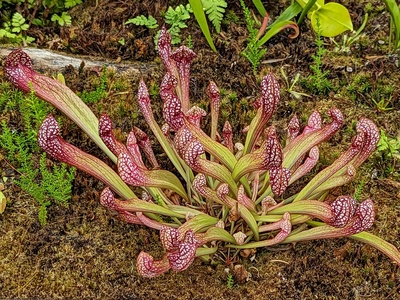
Parrot pitcher plant
S. psittacina has sideways pitchers that lure terrestrial prey into a tubular trap, common in Gulf Coast bogs. It’s grown by carnivorous plant enthusiasts; replicate bog conditions and avoid collecting wild plants.
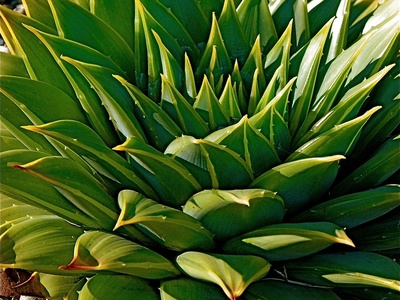
Spiral aloe
Aloe polyphylla forms dramatic geometric spirals on mountain slopes in Lesotho. It’s prized by gardeners but difficult to keep—needs cool, well-drained soil and is protected in its native range.
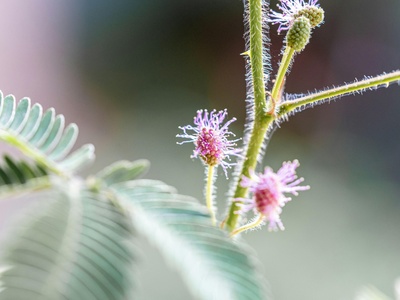
Sensitive plant
Mimosa folds its leaves quickly when disturbed and is common in tropical disturbed sites. It’s a fun demonstration plant; grow in warm conditions and note that invasiveness can be an issue in some regions.
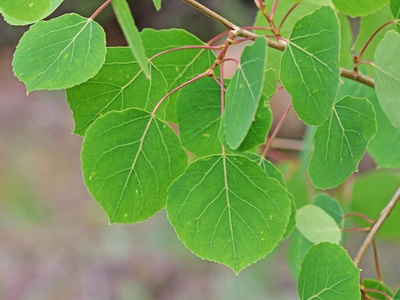
Quaking aspen (Pando clone)
Quaking aspen can form vast clonal colonies by root sprouts; Pando in Utah is a famous single organism covering many hectares. It highlights clonal ecology and needs fire and grazing management to persist.
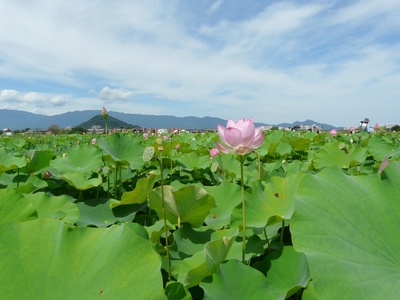
Sacred lotus
The sacred lotus produces seeds that remain viable for hundreds to thousands of years and floats on ponds with waxy leaves. It’s culturally significant and easy to grow in containers with warm, sunny water gardens.
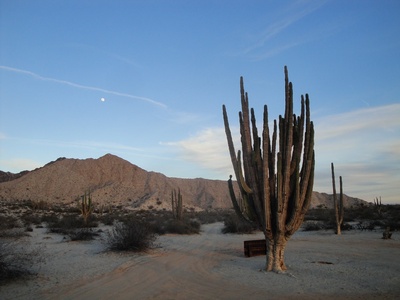
Cardón cactus
Pachycereus pringlei towers over desert scrub with robust, columnar stems and can reach huge masses. It’s a keystone species in arid landscapes; view in situ and never remove wild specimens.
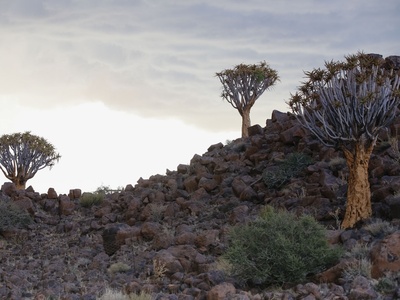
Quiver tree
The quiver tree forms sculptural branches and thick, pale leaves in arid southern Africa. It’s drought-adapted but vulnerable to climate change; admire in habitat and avoid collecting from the wild.
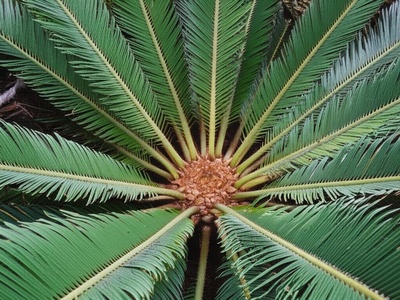
Hart’s cycad
This cycad is prized for appearance and long fossil lineage, producing large cones. Wild populations are rare; grow only nursery-sourced plants and support cycad conservation programs.
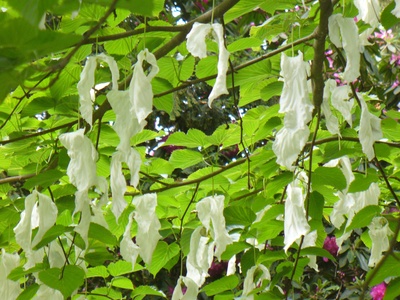
Handkerchief tree
Davidia bears spectacular, dangling white bracts that flutter like handkerchiefs in spring. Native to China, it’s a garden favorite in temperate zones; plant in sheltered sites and appreciate its fleeting display.

Amborella
Amborella is the sole survivor of an early branch of flowering plant evolution, endemic to New Caledonia. It’s a research icon; cultivation outside its habitat is specialist-level and linked to conservation research.
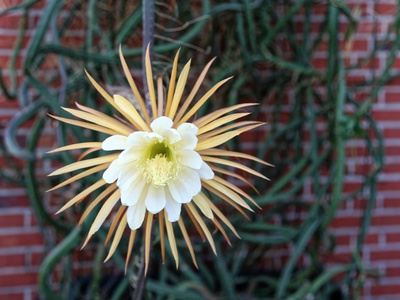
Queen of the night cactus
This cactus produces huge, perfumed flowers that bloom overnight and fade by morning. Native to arid forests, it’s a showy houseplant for collectors; trigger blooms with mature plants and bright, indirect light.
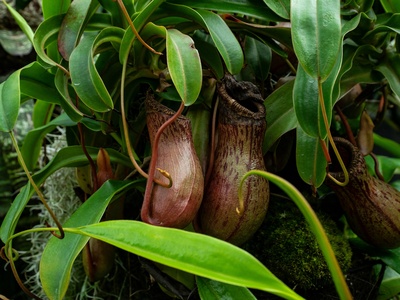
Albany pitcher plant
Cephalotus has small, intricate pitchers unlike other pitcher plant lineages and occupies peaty swamps. It’s critically localized; cultivate with acidic, well-drained soils and avoid wild collection.
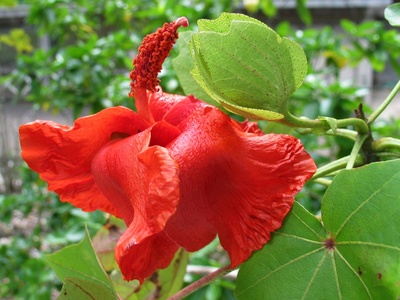
Kokia
Once native to Hawaiian dry forests, Kokia cookei survives only in cultivated specimens after wild extinction. It’s critically rare; propagation and habitat restoration are central to its conservation story.
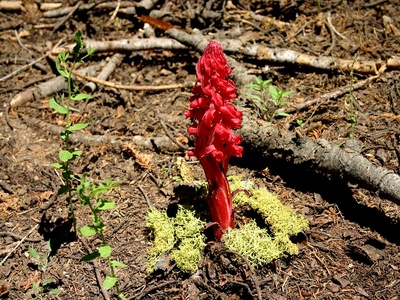
Snow plant
Sarcodes is a striking red mushroom-like plant that relies on fungal networks instead of photosynthesis. It appears briefly on forest floors; admire without digging and conserve its shaded forest habitat.
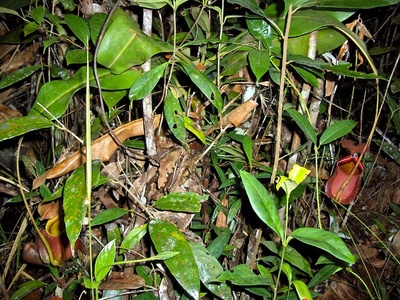
Fanged pitcher plant
This Nepenthes species has two fang-like hooks near the pitcher mouth and hosts symbiotic ants that help process prey. It’s a Borneo endemic; cultivation requires humid, warm conditions and conservation-minded sourcing.
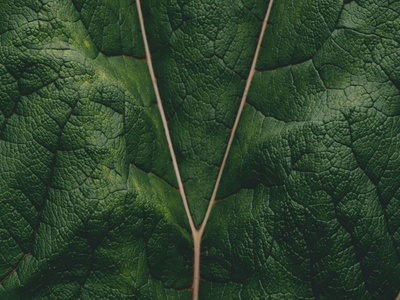
Giant rhubarb
Gunnera produces gigantic, umbrella-like leaves and thrives in wet soils near water. It’s dramatic in garden ponds but can be invasive in some areas; manage spread and enjoy in suitable climates.
